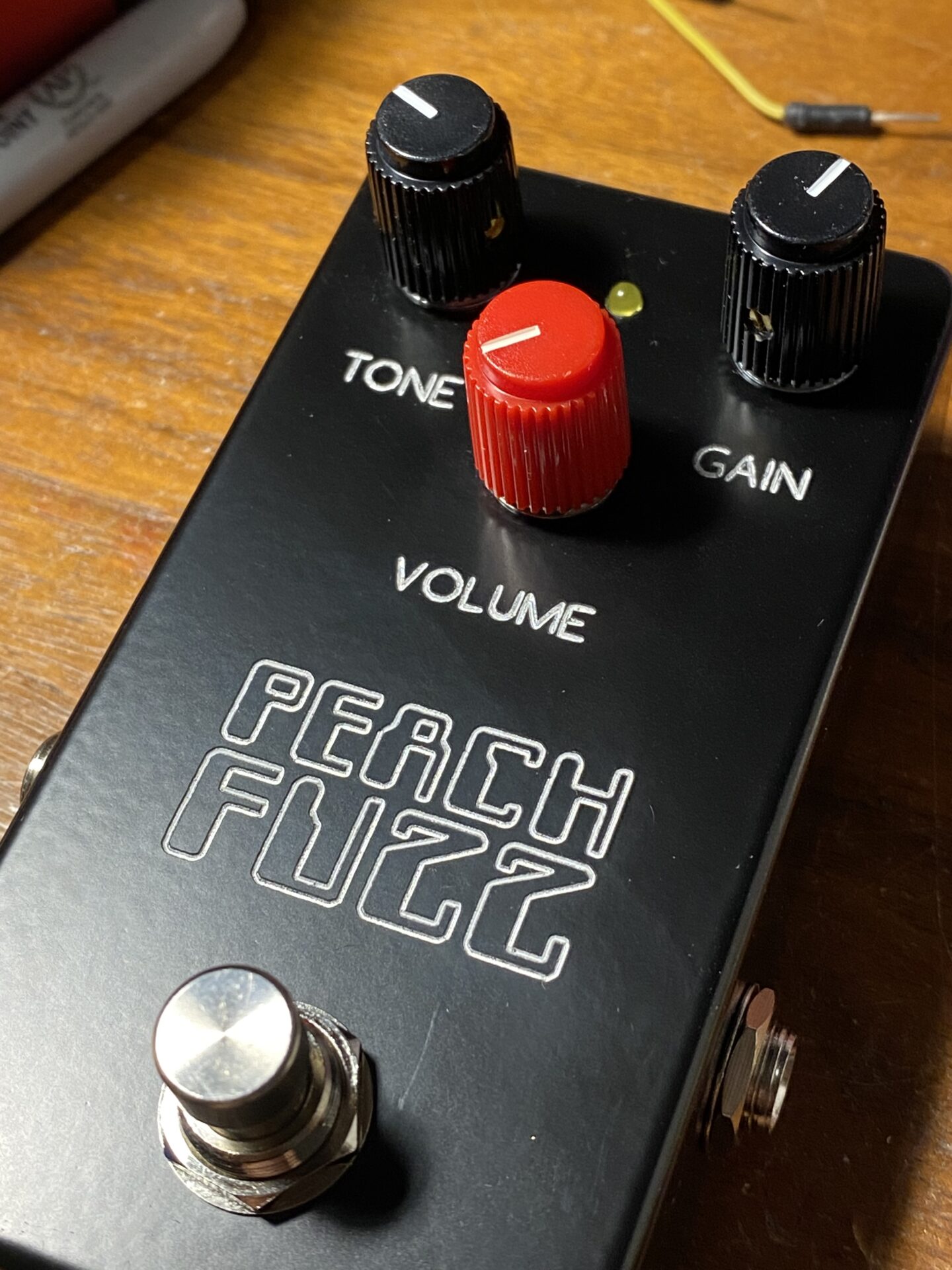I have wanted to try the Frantone Peach Fuzz for a long time. The circuit uses one of my favorite chips the LM386. Not only does it use the 386 it uses two in series.
Frantone is one of the original boutique companies, starting in 1994! They went dormant for a some years but have recently started making pedals again.
The original Peach Fuzz was hard to get for a long time and originals were going for top dollar. The circuit is not complicated, and the parts are easy to get. I figured I would have to build my own at some point.

The recently build the Peach Pit, it was my own idea to mod the Peach Fuzz and add a two band tone control. Now that I have built both, I have to say the original sounds better. Not sure where the mojo comes from, and I didn’t expect to hear a whole lot of difference, but my clone of the original sounds noticeably better to my ears.


I found a schematic on the internet and read some discussions about the circuit. On e comment that came. mentioned the lack of a Nobel network. This a restore and capacitor in series from the output of the LM386 to ground. It is shown in the manufacturers app notes for the 386. The idea is that it stabilizes the chip and prevents oscillations. The original doesn’t include the Zobel. The discussion on the topic suggested that if the app notes show a Zobel network it should be included. I included it, figuring I could leave the pads empty if I wanted, but it would be hard to add the parts if the pads didn’t exist. I populated these for this build, since I don’t have an original it’s hard to say if it affects the the sound.
Speaking of sound, how does it sound? This sounds really good. Not sure what the difference is but this one sounds noticeably better than the Peach Pit. The Peach Fuzz goes from a great gravel overdrive to distorted fuzz tones.
I have a suspicion that a big part of the sound is affected by loading of the last 386 stage.
I designed these PCBs in Eagle PCB and used PCBWay.com to manufacture them. PCBWay.com does great work, I’m always happy with the results.



The LM386 has a default gain of 20. Which is high. It also has the option boost the gain to 200 by bridging pin 1 and 8. I added pads for these two pins on both IC1 and IC2. I figured this would be good for experimentation in the future. PCBWay.com offers a prototyping service $5 for 5 or 10 boards, I always order 10 so this leaves me with a few boards to experiment with!
I made a mistake by forgetting to invoke the power connection on IC3 the dual op-amp. So pin 4 and pin 8 were unconnected. This was easy to fix with a couple jumpers.


Here are a couple pictures of the finished build. I milled this powder coated enclosure and chose a couple knobs that looked good. I got these “mini brutalist” knobs from LoveMySwitches.com. Like the knobs used on the Proco Rat with a smaller diameter.



Conclusion
How does it sound? Sounds great? Would I play this? Yeah for sure! Especially for chuggin’ stoner rock rhythms. Seems like it would be good for a variety of styles. It’s got good low end, almost too much. The distortion goes from a mild medium overdrive to very fuzzy, with less hair than your average fuzz face. I give this pedal high praise over all.

Leave a Reply